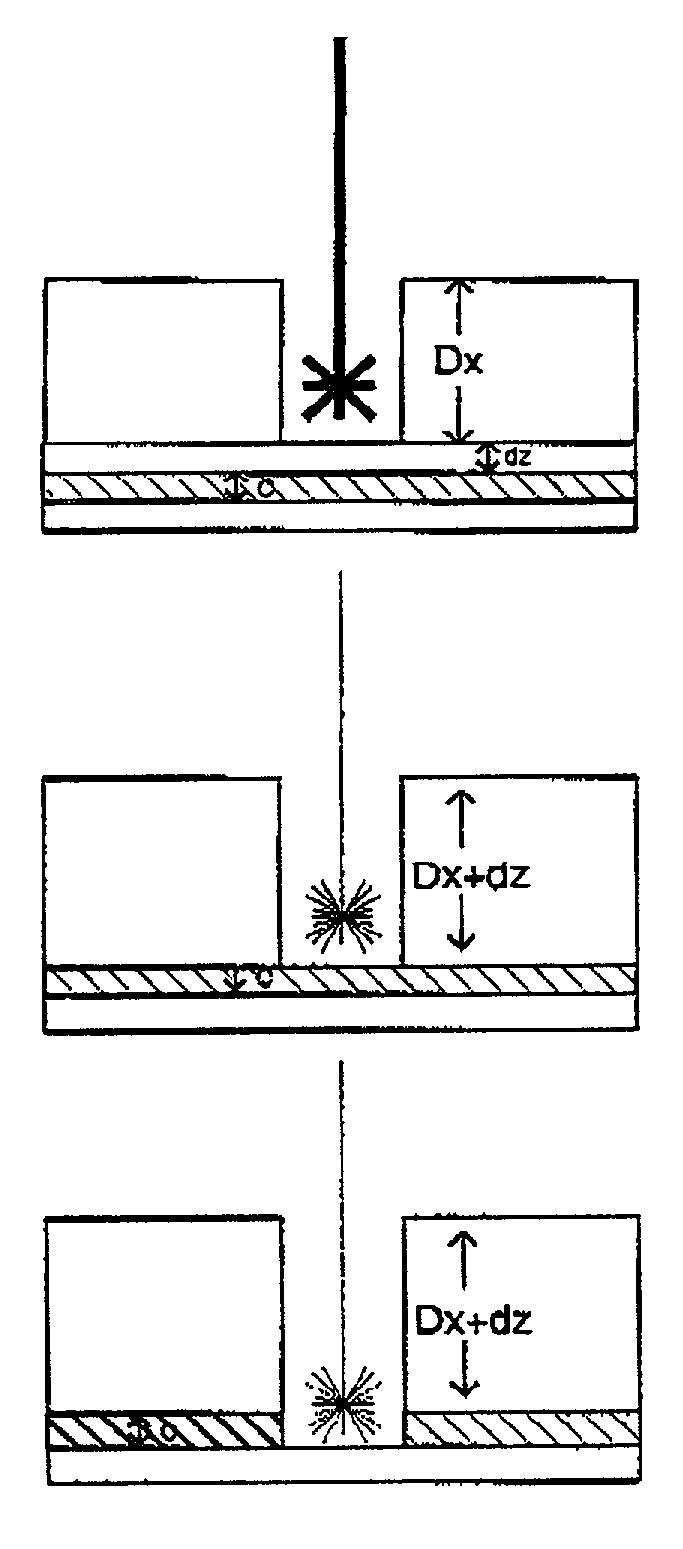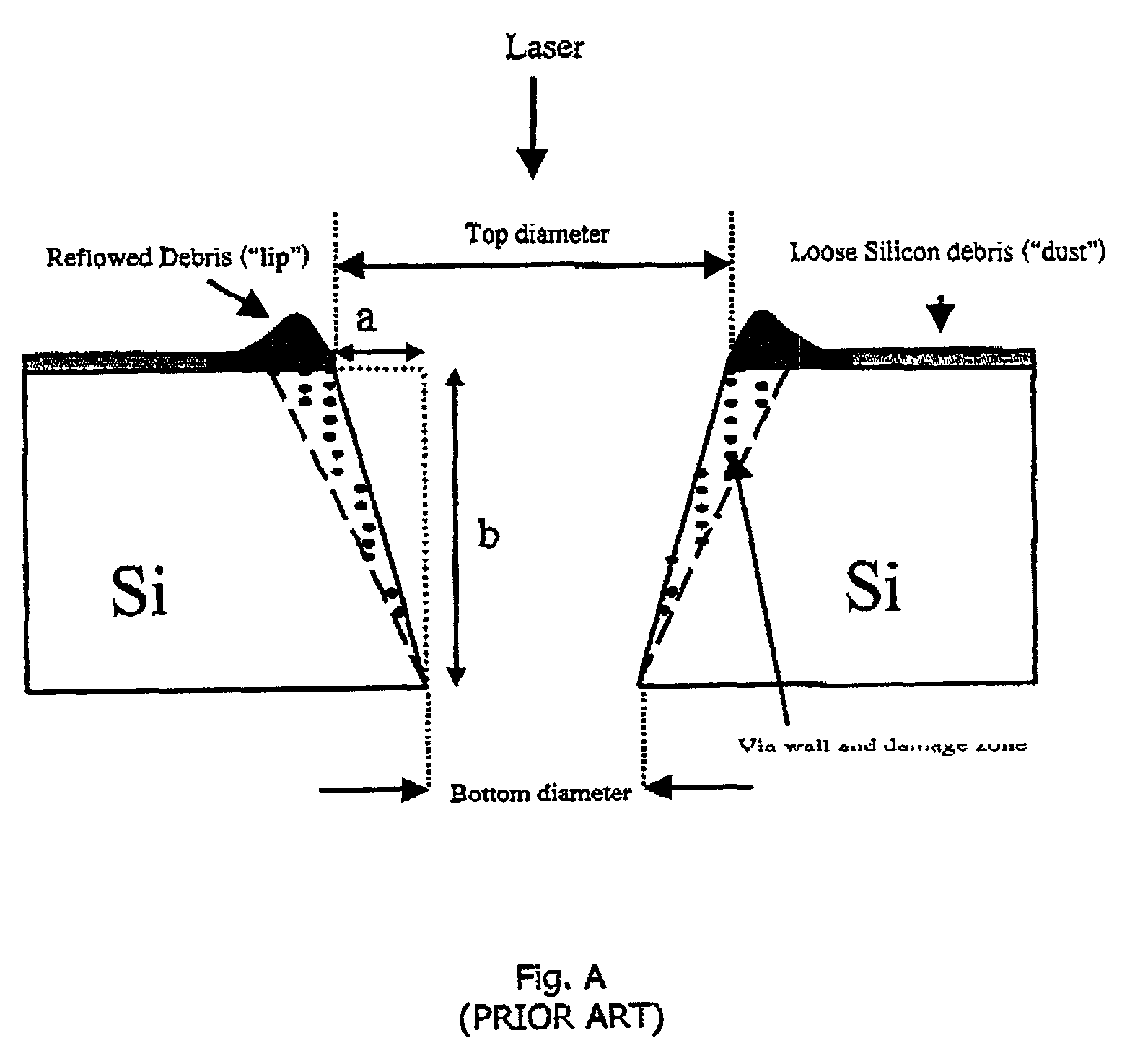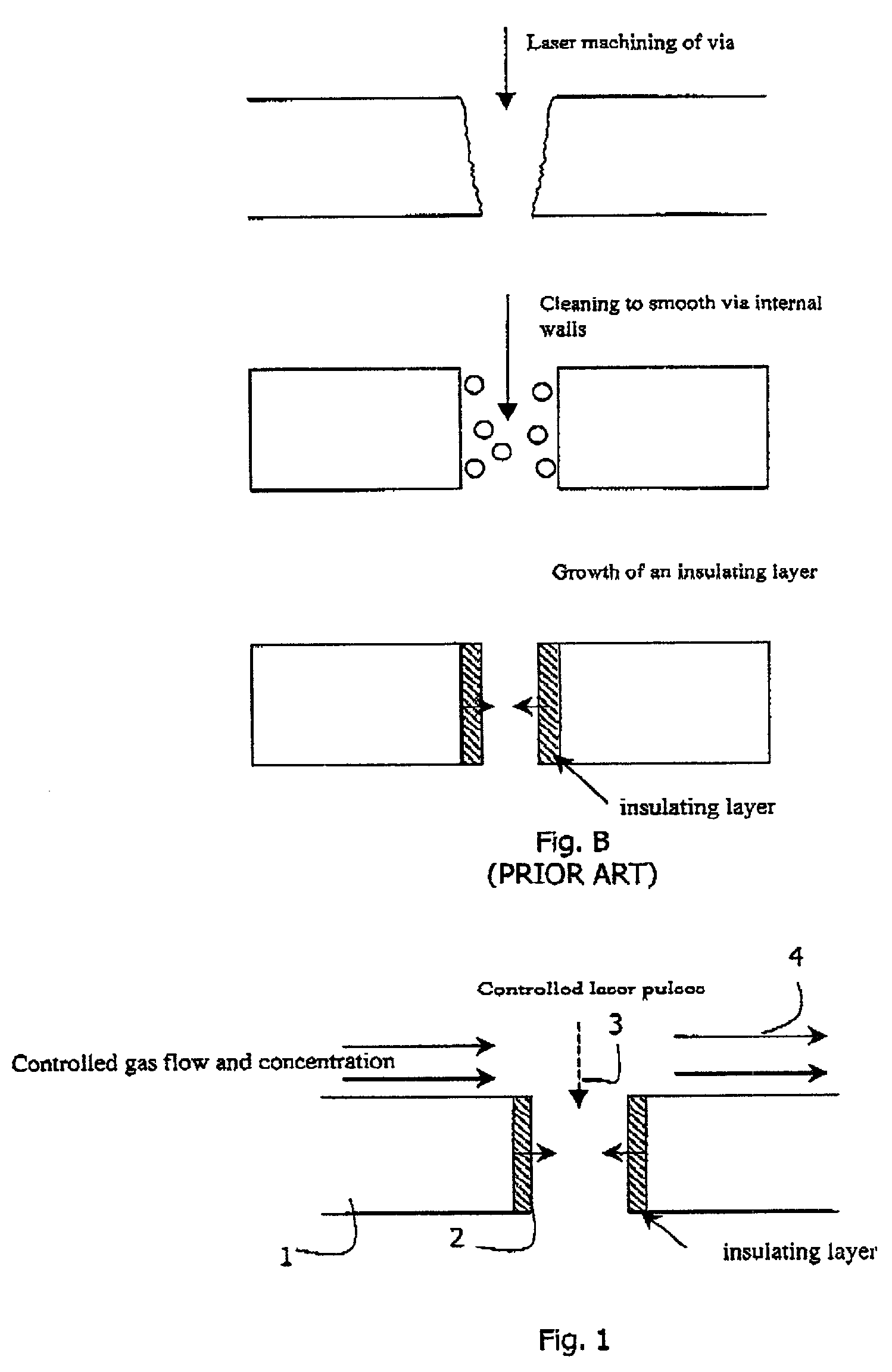Laser machining system and method
a laser machining and laser machining technology, applied in the direction of active medium materials, manufacturing tools, welding/soldering/cutting articles, etc., can solve the problems of increasing the amount of accumulated heat in the material, the need for several post-laser machining process steps, and the inability to remove debris by conventional washing techniques, etc., to reduce the deposition of debris and reduce the thermal damage of the substrate
- Summary
- Abstract
- Description
- Claims
- Application Information
AI Technical Summary
Benefits of technology
Problems solved by technology
Method used
Image
Examples
example 1
[0181]In a process of drilling 1000 vias in a galvo field of 15 mmυ15 mm at a laser repetition rate of 55 kHz, using two pulses on each via and 50 machining steps, for a jump speed of 5 m / sec and a jump delay of 50 ∉s. The total distance between all the vias is ˜0.48 m.
[0182]The machining speed can be estimated as below:
[0183]∋tRR=155000=18.19Πs=18.19υ10-6sec.[0184]NVia / field=1000[0185]J_Speed=5 m / sec[0186]J_Delay=50 ∉s=50υ10−6 sec[0187]NT—Delay=2 (for 2 pulse on each step)[0188]NStep=50
[0189]Vmach=100050↔♠←1000υ2υ18.19υ106♣◆♡0.485•÷≠50υ106υ1000=≈¨~110vias / sec.
[0190]The above example describes a specific case where the laser pulse parameters remain unchanged throughout the multi-step process. However, if the laser pulse properties such as inter-pulse separation (tRR) and the number of pulses per step (NT—Delay) change from step to step, the denominator of equation (1.1) need to be replaced by the total sum of t1, t2 and t3 for each step.
Formation of Blind Microvi...
PUM
| Property | Measurement | Unit |
|---|---|---|
| repetition frequency | aaaaa | aaaaa |
| diameter | aaaaa | aaaaa |
| pressures | aaaaa | aaaaa |
Abstract
Description
Claims
Application Information
 Login to View More
Login to View More - R&D
- Intellectual Property
- Life Sciences
- Materials
- Tech Scout
- Unparalleled Data Quality
- Higher Quality Content
- 60% Fewer Hallucinations
Browse by: Latest US Patents, China's latest patents, Technical Efficacy Thesaurus, Application Domain, Technology Topic, Popular Technical Reports.
© 2025 PatSnap. All rights reserved.Legal|Privacy policy|Modern Slavery Act Transparency Statement|Sitemap|About US| Contact US: help@patsnap.com



